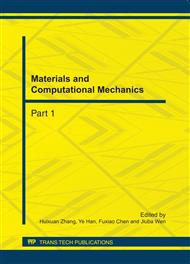p.980
p.984
p.990
p.995
p.999
p.1003
p.1007
p.1014
p.1018
The Accelerated Corrosion of Elemental Sulfur for Carbon Steel in Wet H2S Environment
Abstract:
The accelerated corrosion action of sulfur for carbon steel in wet H2S environment was studied by simulating the actual serviced environment. The weight-loss method, SEM, EDS and X-ray diffraction techniques are used to analyze the corrosion rate, the structure and the composition of the corrosion production formed in the environments. The results show that sulfur aggravated the corrosion sharply in wet H2S environment.
Info:
Periodical:
Pages:
999-1002
Citation:
Online since:
October 2011
Authors:
Keywords:
Price:
Сopyright:
© 2012 Trans Tech Publications Ltd. All Rights Reserved
Share:
Citation:


